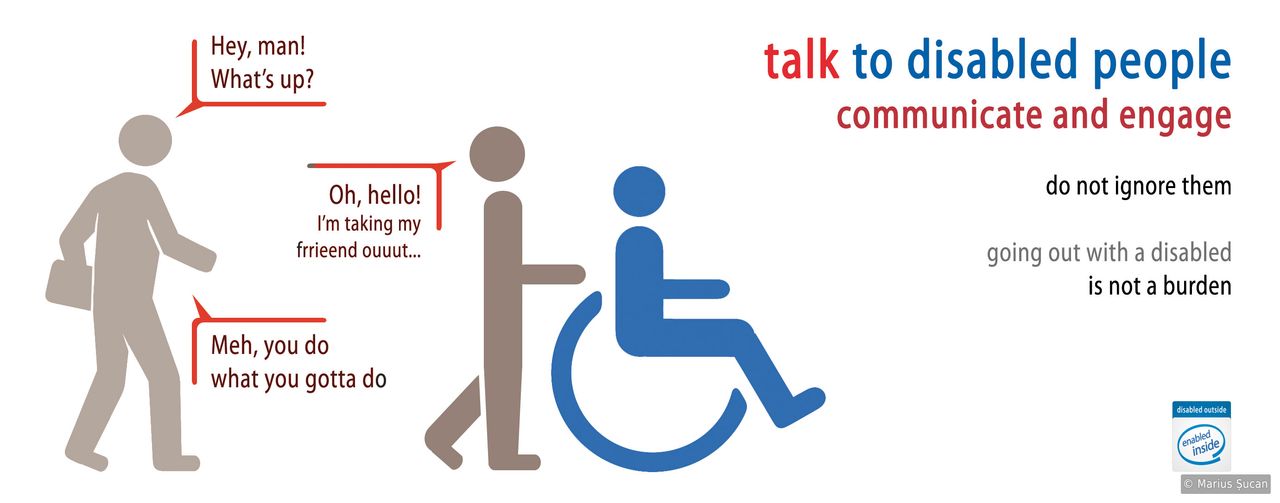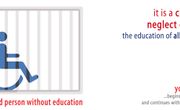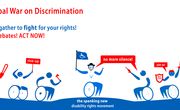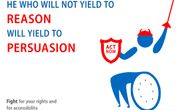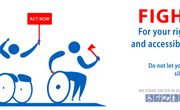Talk to disabled people
Created .
In the image we can see three characters: a disabled person being pushed by a friend. Another person is passing by and starts a conversation with the non-disabled person. The disabled person is ignored. The conversation emphasizes that for the friend of the disabled person is a burden to go out with him.
Quick facts:
- 65% of people have admitted they avoid disabled people, because they don't know how to act around them, in United Kingdom. 38% of people believe disabled people are a burden on society. If so much of the society perceives disabled people as a burden, then what about their own families or friends? Statistics from: BT - Ready, Willing and Disabled Event from 2011.
- 21% of children in families with at least one disabled member are in poverty, a significantly higher proportion than the 16% of children in families with no disabled member. This is extracted from the official UK disability statistics web site.
- Research indicates that violence against children with disabilities occurs at annual rates at least 1.7 times greater than for their peers without disabilities, according to the official site of United Nations.
Please keep in mind that these figures are specific to highly developed countries where efforts are being made to integrate disabled people in the society. In developing countries or Eastern Europe, the situation is much worse and dramatic.
In social and public contexts, people should engage in conversations with the disabled persons as well, not just with the non-disabled people accompanying them. Ignoring them makes them feel awkward and superfluous. Talking with the person assisting the disabled about him in negative terms or with pity is also a proof of ignorance and a lack of understanding of disabled people. If you want to know something about the disabled person in front of you, just ask directly him or her, not the non-disabled person. Do not assume that s/he is incapable of speaking or lacking intellectual abilities to understand communication and social interactions.
